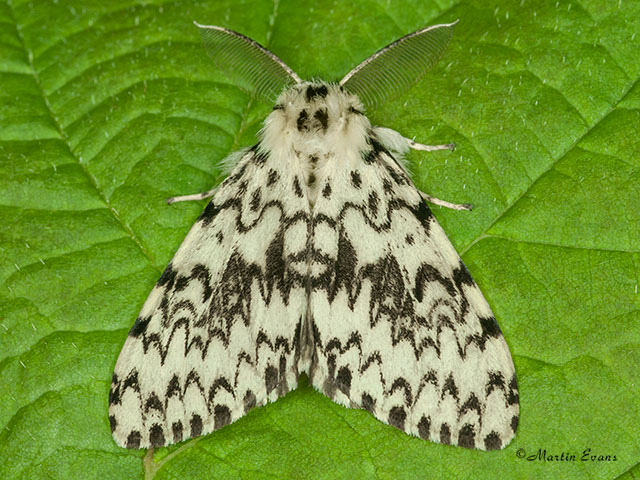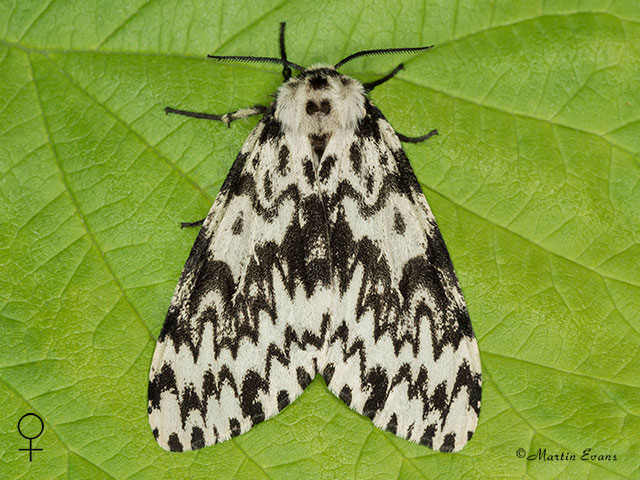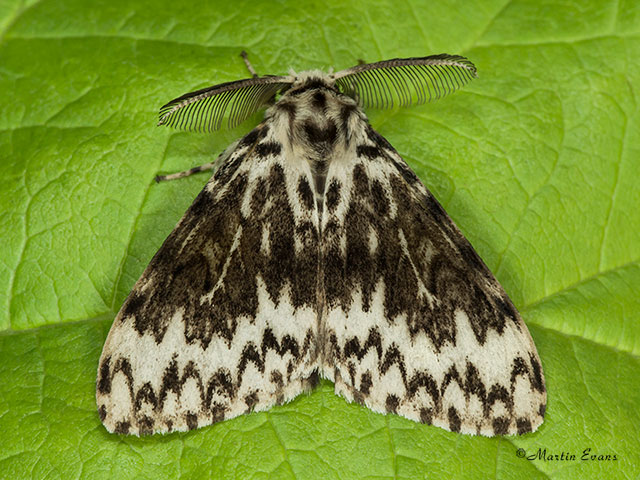Erebidae
72.010 Black Arches Lymantria monacha (Linnaeus, 1758)
Local
Similar species: There is a form with a grey rather than white background which is superficially similar to a male Gypsy Moth Lymantria dispar, otherwise this moth is unlikely to be mistaken for any other British or Irish species.
Forewing: M 18 to 20mm, F 20 to 28mm
Habitats: Deciduous woodland, parkland, scrub and hedgerows.
Habits: The moth can sometimes be found on tree trunks during the day. It comes to light.
Foodplant: The larva feeds mainly on Sessile Oak or Pedunculate Oak, but also on Silver Birch, Downy Birch, Aspen, Midland Hawthorn, elms, Hornbeam, Scots Pine and Norway Spruce. It pupates in a flimsy cocoon spun in the foliage of the foodplant or in a bark crevice.
On the European mainland it has also been recorded feeding on European Silver Fir, Beech, lime and willows.




